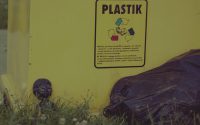Can Virtual Reality Save the World?
Virtual reality is usually mentioned in the context of Gratorama Bonus Codes, interactive and immersive games and movies with a ridiculous and heavy headgear and some joypads, as well, but it is more than that. VR is a valuable tool of human communication, as well as training simulations. Today, we are going to cover a topic of considerable importance – saving the environment using VR.

Environmental Issues
There are several problems that are becoming larger and more difficult to manage every day. In no particular order, they are climate change, overuse of water, sea levels rising, pollution of air, soil, and water, the unwitting integration of plastic into our biology, and the extinction of wildlife, to name a few bigger ones.

Each of these issues has been made public time and time again, but either disregarded as trivial or the people responsible would just wait for the latest news report on the subject to blow over. Companies are cutting corners with the regulations, and the authorities rarely do much to stop them.
People in charge of making the laws and enforcing them often don’t see these problems or are pressured into ignoring them. At first glance, it seems like no amount of protesting could help save the planet.
How Can VR Help?
No, unfortunately, we can’t kidnap people and play them Justin Bieber on loop until the end of time. What we can do, however, is make these problems more tangible. The problem isn’t just the problem, it’s also how people see the problem.

To a suit, simply voicing concerns about environmental problems or protesting is not enough. They see these actions merely as whining, especially when their good friends, the lobbyists, tell them the issues aren’t really all that serious.
Now, as we’ve said before, you can’t drag someone somewhere to show them the effects of pollution and climate change. What you can do is make them feel the experience with VR. It is much more immersive than a simple picture or a video.
The Method
One option would be, for example, to take a sightseeing tour of Beijing, where the viewer would see nothing but smog and people covering their faces with masks. Similarly, there could be courses about environmental problems that could be taught using VR.
It is very easy to ignore a person talking about something. It is even easier to avoid a photo or a documentary. This is why it was so effortless for certain nations and administrations to deny the existence of things like climate change. That being said, if enough people get educated on the issues using VR, the sheer number of people will stop them from continuing.



